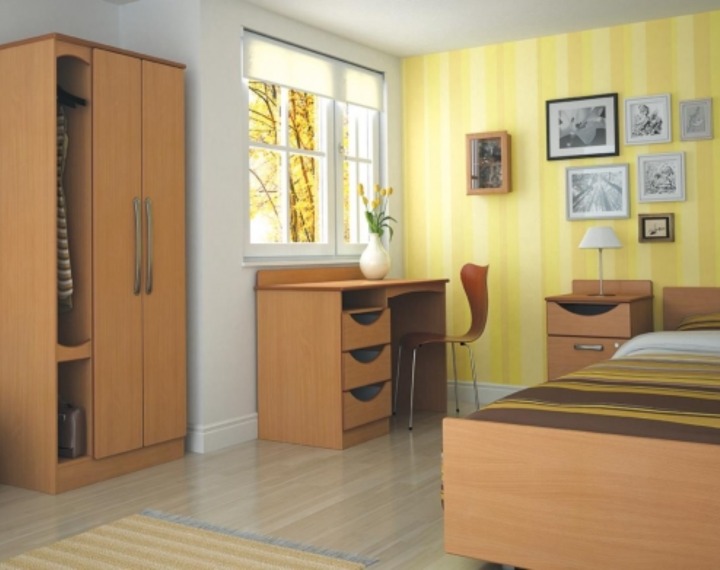Designing for Dementia: What You Should Know
 When a person has dementia, it can have a huge impact on every aspect of their lives. Dementia isn’t a disease in itself, it’s a condition that is associated with a certain set of symptoms that makes people less able to care for themselves due to the gradual cognitive deterioration caused. This condition usually only occurs in older people over 65-years-old as a result of the ageing process.
When a person has dementia, it can have a huge impact on every aspect of their lives. Dementia isn’t a disease in itself, it’s a condition that is associated with a certain set of symptoms that makes people less able to care for themselves due to the gradual cognitive deterioration caused. This condition usually only occurs in older people over 65-years-old as a result of the ageing process.
Often, dementia is described as being a memory issue, however, what new research has shown is that for family members and carers, memory problems are the least of their concerns. This is because this form of brain deterioration leads to all manner of other problems. These include issues such as aggression, frustration and agitation, a lack of communication skills, distress, and practical issues such as incontinence and choking.
Of course, when it comes to designing an environment for people who have dementia, there is a lot that needs to be considered. A common misconception when it comes to designing for dementia is that adopting a selection of ideas that have been suggested to be beneficial but have never been proven to be, can work well, such as incorporating more traditional features from the past, like a vintage pub or old-fashioned sweet shop. This is a serious concern, particularly in care environments, which is why it’s so essential that when designing for dementia, due care and diligence is taken.
What should dementia-friendly spaces be?
Dementia-friendly spaces should be places that incorporate specific dementia-friendly features that research has proven to be effective. For instance, the use of the right lighting, flooring, and signage can help to reduce the issues that dementia can cause for people and can make day-to-day life that little bit easier.
It’s essential that features such as furniture and crockery are kept traditional in terms of their design, as this can help to prevent confusion and upset from occurring. A common misconception is that child-like design can be beneficial for people living with dementia, however, this can cause upset and embarrassment. Instead, it’s best to design spaces that are not only aesthetically pleasing but that also focus on the strengths of people with dementia and make life easier for them to manage.
How should designers come up with ideas?
When it comes to creating dementia-friendly spaces, designers should be mindful of using scientific research and proven case studies for design aspects, rather than following fashion. It’s crucial that each design used in dementia-friendly spaces has been carefully thought out and works to the assumption that people with dementia struggle to work things out, so the easier and clearer the design used is, the better.
For example, someone with dementia may struggle to determine which way they should turn when they leave a room and may find it hard getting back to a room after leaving it. They might also struggle to understand how the shower works, for instance. Or they may not know how to find their clothes or where the toilet is located.
For people who have dementia, providing them with clear cupboards and storage spaces could help to stop them constantly opening doors to see what is inside. People with dementia often get confused, so making things clear can prevent upset, anger and frustration from occurring.
Adding stickers to doors and other items to explain where things are could also prove useful. For people with low mobility who are prone to slips and falls, consider having additional support like grab rails and hoists installed around their rooms, to make life easier for them (and your team).
At CLH, we offer a wide range of specialist dementia products, including The Harley Bedroom Range, which has been specifically designed to support and meet the needs of people living with dementia. This range has been developed to try to help you promote a safe and comfortable surrounding for your residents to feel at home in. Harley incorporates key design points to help minimise confusion and anxiety, which may help your residents with their daily routine.
What do the regulations say?
As of yet, there are no set regulatory standards for dementia-friendly design. However, there is support and advice available, such as from specialists from the Dementia Services Development Centre, for example. While there may not be any set regulations currently in place when it comes to dementia-friendly design, that doesn’t mean that there aren’t certain factors that should be carefully considered.
The Dementia Services Development Centre and charities like The Alzheimer’s Society offer a large amount of support when it comes to designing for dementia. The Dementia Services Development Centre offers the use of an online virtual dementia-friendly care facility that can help users to identify whether their design is, in fact, dementia-friendly.
There you have it, a guide to the ins and outs of designing for dementia. Creating care environments that are perfectly designed to suit the needs of every person using them is not an easy task, but hopefully our guide above will help to make the process a little simpler, easier and less stressful for you and your care team.





